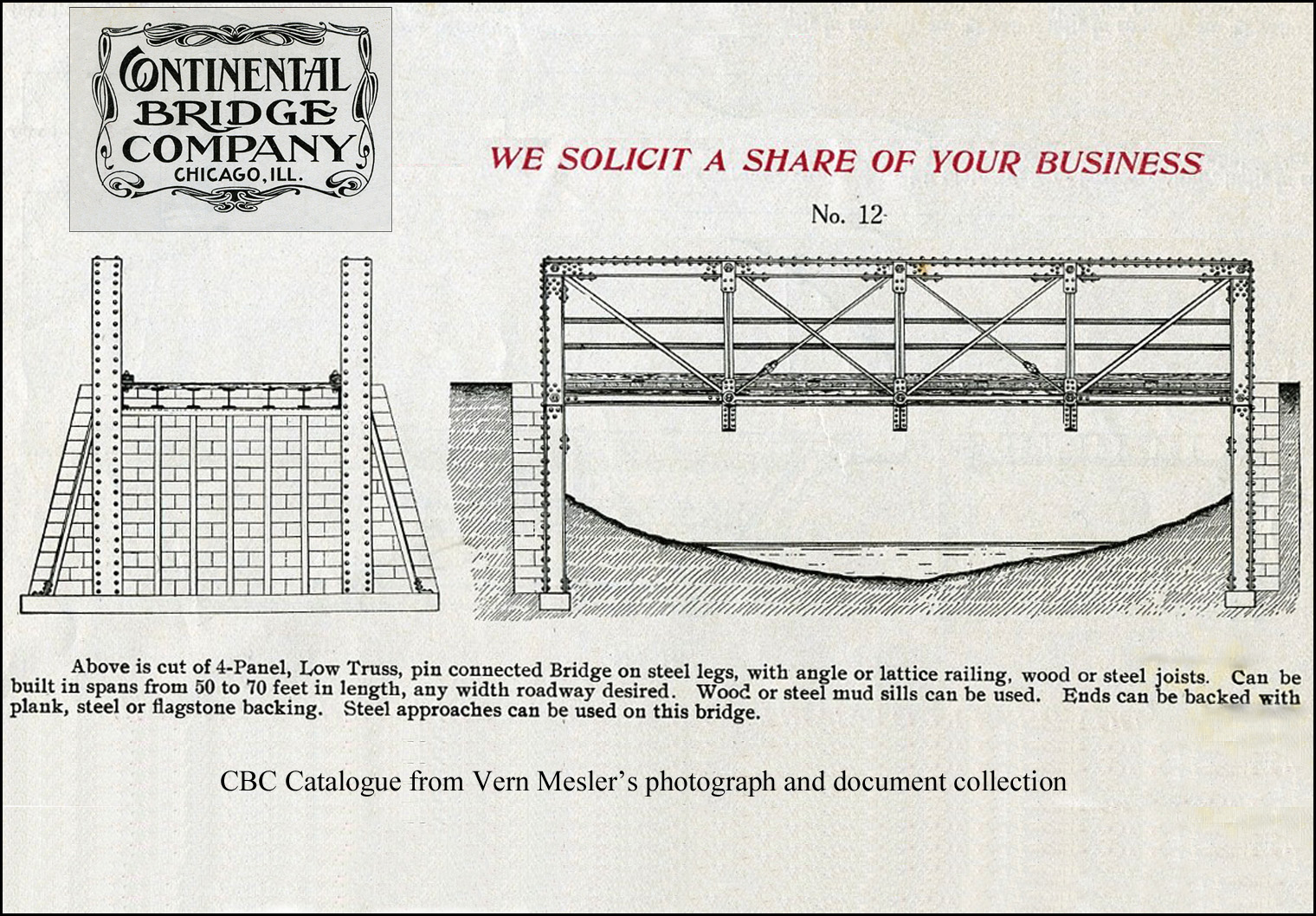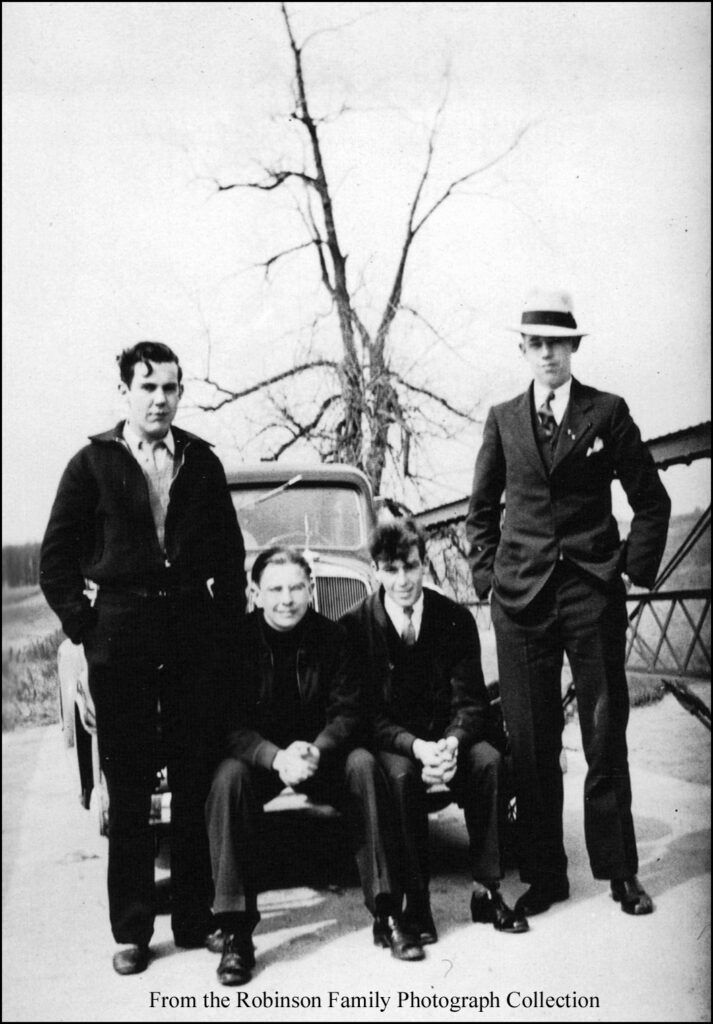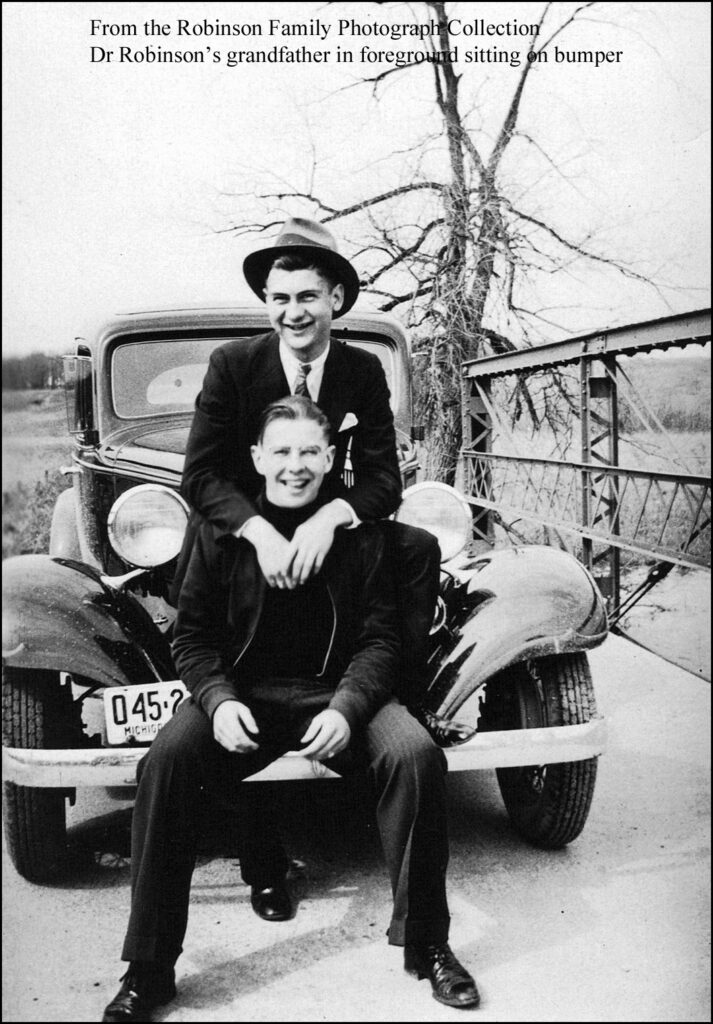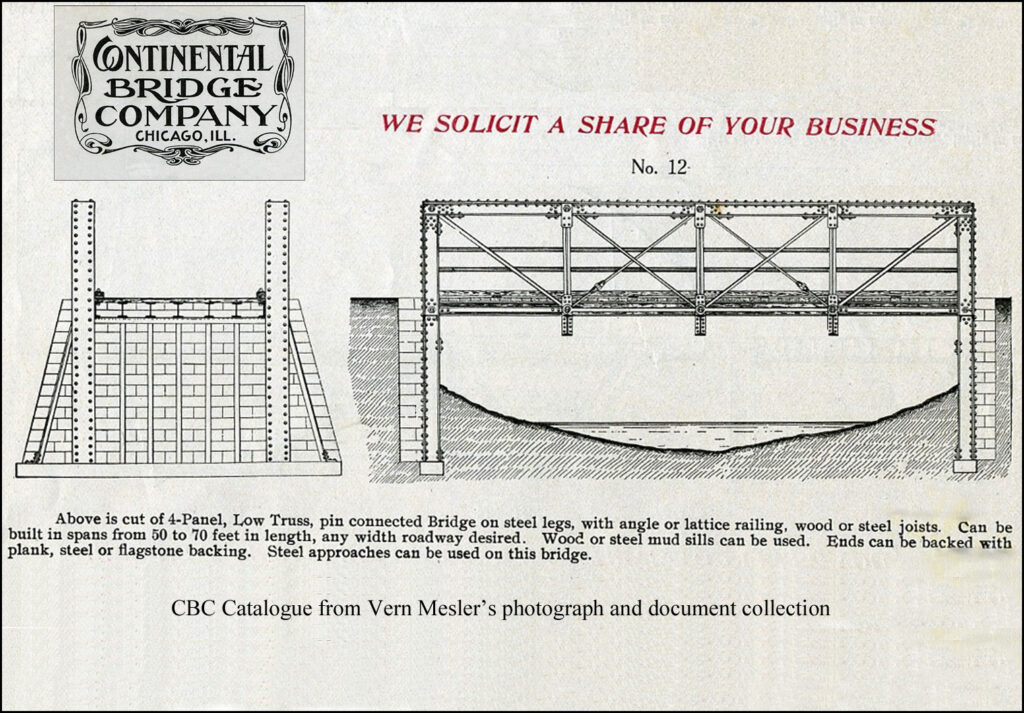A two-dollar photograph postcard purchased at an antique mall in Mason, Michigan, led to a pleasant afternoon drive to Flushing, Michigan, the location of the bridge in the Mystery Bridge article I recently posted on social media. What drew me to that historic photograph was the lady standing next to the bridge. While we were able to discover the history and original location of that bridge, the name of the lady next to the bridge remains a mystery. After years of collecting postcards and photographs of historic riveted truss bridges, I’ve discovered it is a rare event that a historic bridge also includes a person on the bridge. So, it was a pleasure to have Dr Steve Robinson* share historic photographs of his grandfather posing with Michigan State University classmates on a riveted truss historic bridge (circa 1930s). Alongside what appears to be a new 1930s automobile is clearly seen a bedstead truss bridge, with its attached hub guard. There is nothing written on the photographs to establish the bridge location, although several photographs within the album group are labelled “Freshmen Hell Week,” and Dr Robinson’s grandfather was a resident at Wells Hall at MSU. This type of bridge is referred to as a pony truss bridge; the trusses are short and do not connect at the top. Pony trusses in early design texts were described as Low Trusses, as seen in the catalogue of the Continental Bridge Company (Chicago 1903-1907), advertising a riveted bedstead truss design. In Dr Robinson’s research, he determined that the car license plate may have been issued in Leelanau County, Michigan, and that other possible locations of the bridge are Milford or Silverwood, Michigan. As we search our archives and historic records online, we find that the riveted bedstead truss design has an interesting history. The distinctive riveted vertical on this bridge may lead to its designer and fabricator. [*President of Lansing Community College]
Vern Mesler, 2023



